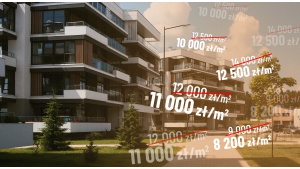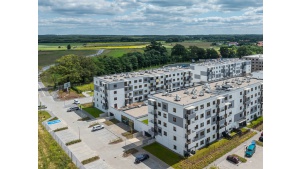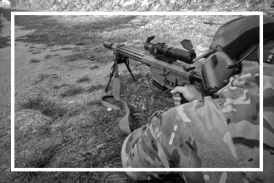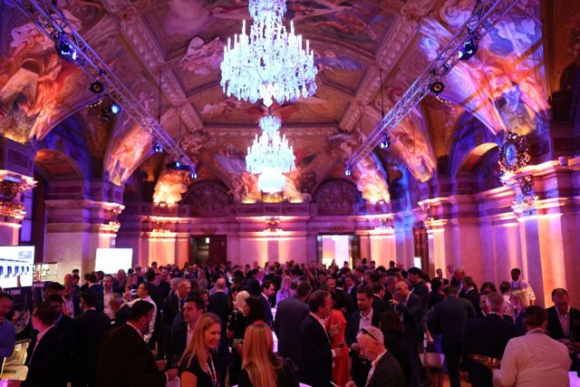Investment market in the CEE region - atypical end of the year
Prestige PR
Włodarzewska 81C lok 81
02-393 Warszawa
i.wisniewska|prestigepr.pl| |i.wisniewska|prestigepr.pl
508 927 958
www.prestigepr.pl
Author: Bartłomiej Krzyżak, Senior Director, Investment at Avison Young
CEE Property Forum 2022 in Vienna - echoes, moods and investment trends
Avison Young participated in CEE Property Forum 2022, which has just ended in Vienna. Unfortunately, the mood at the event hardly indicated great optimism among the market players. This year has brought unprecedented challenges to the real estate sector. We are in the place where investors mostly monitor the market instead of taking actual actions.
Annually, the fourth quarter of the year has been a typical period of closing investment transactions. This year, however, since the outbreak of the conflict in Ukraine, when it comes to initiating new projects, the activity of investment entities has practically been frozen. Not enough transactions have been launched in the second and third quarters to see plenty finalizations by the end of the year. Therefore, both the year-end and the whole 2022 is not expected to be spectacular in terms of investment volume. And new reports from Russia do not help – they fuel the state of anxiety and maintain the status quo for new investment projects. The potential escalation of the conflict in Ukraine and the inevitable energy crisis are effectively dampening the willingness to take actions in all investment circles.
Avison Young estimates that the investors’ conservative approach is likely to last for months, and actions taken will be selective and profiled. The entities that are forced to maintain the annual target at a certain level will be among those that are most likely to execute and close transactions. A strategic aspect of investing in such an uncertain market and with rising interest rates is the availability and cost of financing of commercial products. The yields are increasing for sure, which is mostly visible in the warehouse segment.
Another difficult time will be the first quarter of 2023, a period of rents’ indexation, which will require a balanced dialogue between property owners and tenants. Bearing in mind the anticipated, drastic increase in operating costs, it should be expected that the most difficult talks are yet to be initiated.
Today, the quality of the property is more important than ever. Compliance with environmental, social and governance (ESG) regulations is at the forefront, in particular in terms of energy consumption, but also in terms of shaping investment decisions. The key to the ESG strategy is the ability to improve the energy efficiency of properties. We will be observing enhancement of this trend in the upcoming years. The green revolution in real estate is already bringing tangible, financial results for tenants, but at the same time it requires higher construction and renovation costs, which will probably translate into an increase in rents in new facilities, as well as the modernized properties.

Deweloperzy ukrywają ceny mieszkań. Z troski o klientów czy swoje portfele?

Więcej przestrzeni, mniej hałasu – dlaczego Polacy coraz częściej wybierają przedmieścia?

Jak czytać rzuty mieszkań i uniknąć przykrych niespodzianek? AI ułatwia wybór
Więcej ważnych informacji
 Jedynka Newserii
Jedynka Newserii

 Jedynka Newserii
Jedynka Newserii

Polityka

Unijne mechanizmy ułatwiają zwiększenie wydatków na obronność przez europejskie kraje NATO. Ważnym aspektem infrastruktura podwójnego zastosowania
Wydatki na obronność w krajach NATO mają wzrosnąć do 2035 roku do 5 proc. PKB. W dużej mierze będzie to możliwe dzięki Unii Europejskiej, która stworzyła ramy umożliwiające krajom członkowskim realizację celów NATO w zakresie obronności, nie tylko poprzez finansowanie i inwestycje, ale także poprzez elastyczność budżetową. – To pełna synergia, można powiedzieć, że Unia Europejska współfinansuje razem z państwami członkowskimi cele zdolnościowe NATO – ocenia Paweł Zalewski, sekretarz stanu w Ministerstwie Obrony Narodowej.
Ochrona środowiska
Rusza budowa lądowej infrastruktury dla projektów Bałtyk 2 i Bałtyk 3. Prąd z tych farm wiatrowych popłynie w 2027 roku

Ruszyła budowa lądowej infrastruktury dla morskich farm wiatrowych Bałtyk 2 i Bałtyk 3 rozwijanych przez Equinor i Grupę Polenergia. To przede wszystkim baza serwisowa w Łebie i dwie stacje elektroenergetyczne. Jednocześnie trwają przygotowania do rozpoczęcia prac na morzu. Pierwszy prąd z obu projektów popłynie w 2027 roku, a w kolejce czeka morska farma wiatrowa Bałtyk 1 – największy i najbardziej zaawansowany projekt II fazy rozwoju offshore.
Edukacja
Uczelnie zaczynają wspólnie walczyć ze zjawiskiem mobbingu i dyskryminacji. Ruszają badania nad skalą problemu

Szkoły wyższe chcą aktywniej walczyć ze zjawiskiem mobbingu i dyskryminacji zarówno wobec pracowników, jak i studentów. W ramach projektu Bezpieczna Uczelnia będą się wymieniać dobrymi praktykami w zakresie polityki antymobbingowej. Zostaną przeprowadzone także badania na temat obecnej sytuacji w środowisku akademickim. Dotychczasowe badania prowadzone przez Fundację Science Watch Polska wskazują, że mobbing to dość powszechne zjawisko na uczelniach, które przybiera charakterystyczne dla środowiska formy.
Partner serwisu
Szkolenia

Akademia Newserii
Akademia Newserii to projekt, w ramach którego najlepsi polscy dziennikarze biznesowi, giełdowi oraz lifestylowi, a także szkoleniowcy z wieloletnim doświadczeniem dzielą się swoją wiedzą nt. pracy z mediami.








.gif)

 |
| |
| |
|